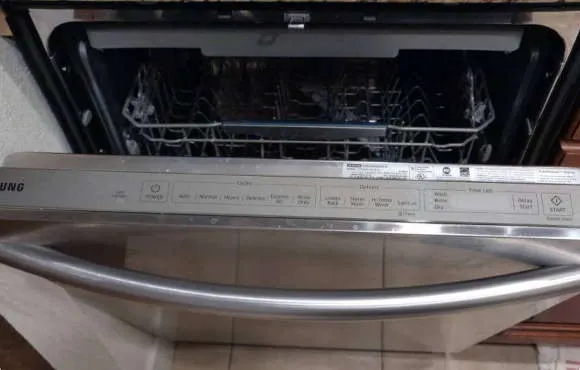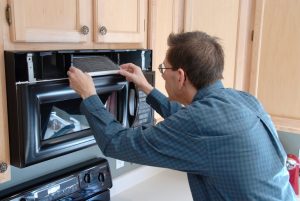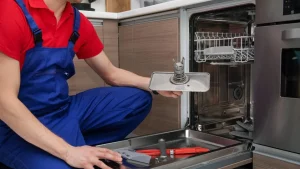Dishwasher Repair Services in El Paso, TX

Having your dishwasher run smoothly is an essential part of having a clean kitchen. But a few key things can go wrong and make it difficult to use the appliance.
Luckily, most dishwasher problems are fixable by the average homeowner without calling for an appliance repair technician. Read on to learn more about the most common dishwasher problems and how to fix them with Dishwasher Repair Services in El Paso TX.
Water Leak
If you are finding puddles of water on your floor after using the dishwasher, there is a problem. This could mean the dishwasher hose that brings water into the appliance is cracked or the water inlet valve doesn’t close correctly during the wash cycle, causing your dishwasher to overfill and leak water out. It is essential to catch this type of problem before it causes significant water damage to your kitchen floors.
Start by turning off the power to your dishwasher. If possible, shut off the home circuit breaker that controls your dishwasher as well to prevent any electrical shock. Then carefully inspect the appliance to find the source of the leak. Water leaks can be caused by a damaged door seal, a clogged spray arm or other components under the dishwasher that are broken or loose. You should also check the drain hose connection and the water supply line connection to the dishwasher to ensure they are secure.
If the leaking is coming from the door area, you should start by replacing the door seal. You can do this by following the manufacturer’s instructions. This will help to create a watertight seal that is essential for proper dishwasher function and preventing leaking.
The next place to look for a water leak is the spray arm. You can do this by removing the spray arm from the dishwasher and checking it for any signs of wear or damage. Replace the spray arm as needed.
If you are unable to fix your dishwasher and there is a visible water trail or evidence of a leak, it’s time to call a repair service at Dishwasher Repair Services in El Paso TX. A professional will be able to quickly and accurately repair your dishwasher, saving you money and the hassle of dealing with a flooded kitchen.
If your dishwasher hose is leaking, you will need to replace it. This will involve removing the kickplate panel in the bottom of your appliance, locating and removing the screws and hose clamp connected to the inlet valve and then removing the old hose and installing a new one.
Error Codes
If your dishwasher is displaying an error code, it means there is something wrong with your machine. This could be anything from a small fault to a major problem, but it’s important not to ignore the code, as this will lead to further problems and potentially a water leak. There are a few different types of error codes that may appear on your screen, but the most common is E10. This code indicates that your dishwasher has a leak, and you should drain the base and find where the leak is coming from. This may be a faulty sensor, a loose hose or even a clogged filter.
Another common code is E25, which means that your dishwasher is not draining properly. This could be a blocked or faulty drain pump, a clogged filter or, in rare cases, a faulty control board. To fix this, start by checking that the drain hose is not plugged in or disconnected from the machine. If this is not the case, then you may need to replace the drain pump.
Finally, you can also get an E06 error code on your dishwasher, which means that the drying fan is not working. This is usually caused by a broken or malfunctioning fan in your dishwasher, so you will need to contact a professional to fix it.
In general, these errors indicate that your dishwasher has a sensor problem or that the sensors are not communicating with the main control board. To fix this, you should check that the water supply is not kinked or restricted and ensure that the water supply cut-off valve is turned off completely. You should also check the sensor connections and replace the sensors if necessary.
Bosch dishwashers will display an error code if there is a power failure of 10% or more, which can be caused by a faulty thermostat or thermistor. This error code can also be caused by a clogged filter or hard water, so you should replace these items if they are causing the issue. You can also try replacing the power module, as this will most likely resolve the error code.
Water Heater
Your dishwasher is one of the hardest-working appliances in your home. It is used every day of the year and often several times per day. It takes a beating from constant use, hot water, and cleaning chemicals, and it isn’t long before it may start showing signs of wear. When this happens, you might need to call a professional to make the necessary repairs or replacements.
Before making any repairs or replacing any parts on your dishwasher, first ensure that it is unplugged and not running a load. Check the electrical cord and plug to ensure they are in good condition, then check that there is no blown fuse or tripped circuit breaker. If there is, reset the breaker. Most built-in dishwashers are wired directly to a circuit, so you’ll want to check at the main entrance panel (or a separate entry panel in an older home) to make sure that the circuit is working properly.
If your dishwasher isn’t receiving any power, it may be time to replace the heating element. These components aren’t cheap, but they are relatively easy to replace as you can access the inside of your dishwasher without removing the front. If the heating element isn’t the problem, however, you might have a wiring connection issue that will require a professional to repair.
Most dishwashers discharge the used water through a pipe or hose that connects to the drain or garbage disposer under your kitchen sink. If you find a leaking hose, examine the hose for cracks or cuts and tighten the connections or replace the hose if it is damaged. Also, check that any flexible hoses or fittings are securely attached to the inlet valve, drain valve, or hoses.
Most newer models of dishwashers have a float switch that is designed to keep the water from overflowing the basin. You can test this by tapping the float switch with a screwdriver or other blunt object to see if it makes a clicking sound and is functioning correctly. If you need to replace the float switch, consult your owner’s manual for information on gaining access to the lower access panel and then remove the old switch.
Drain Pump
The dishwasher’s drain pump uses an impeller to force water through the drain hose into a sink drain or garbage disposal during multiple drain cycles. If the pump motor fails, your dishwasher won’t drain. This is a non-repairable problem and will require replacing the drain pump.
The first step in diagnosing the problem is to ensure you have the correct replacement pump for your dishwasher model. To do so, locate the “model number” which is usually found on a sticker or data plate under your door at the front, or behind it in the frame. You can also find the model number in the owner’s manual, or on the back of your dishwasher.
Before attempting to disassemble the drain pump, make sure your appliance is switched off and disconnected from both the power source and the water supply. You will also want to remove any screws or bolts that secure the dishwasher to the cabinet and countertop. Then, disconnect the hoses from the drain pump port (depress the retaining tab to rotate free, unscrew or unthread the screw), and disconnect any wire harnesses from the pump motor ports (a blue wire belongs in the left port and a gray wire belongs in the right).
When you’re ready to replace the drain pump, start by applying lubrication to all parts before installing them. Then, install the new pump motor by pressing it onto the top of the sump with the blue box oriented to the left, and carefully rotating it clockwise until it snaps into a locked position.
Next, reattach the hoses to the ports and secure them with the appropriate clamps. If you need to transfer any gaskets or isolators from the old unit to the new one, now is the time to do so. Finally, reconnect the power wires and grounding wire(s) to the new pump motor (depress a retaining tab or unscrew the screw, depress the terminal clip, and/or rethread the mounting bracket or retainers).
Once you’ve replaced the drain pump, turn on your dishwasher and run a cycle to test it. If your dishwasher still doesn’t drain, you may need to replace the check valve flapper or the drain pump.






